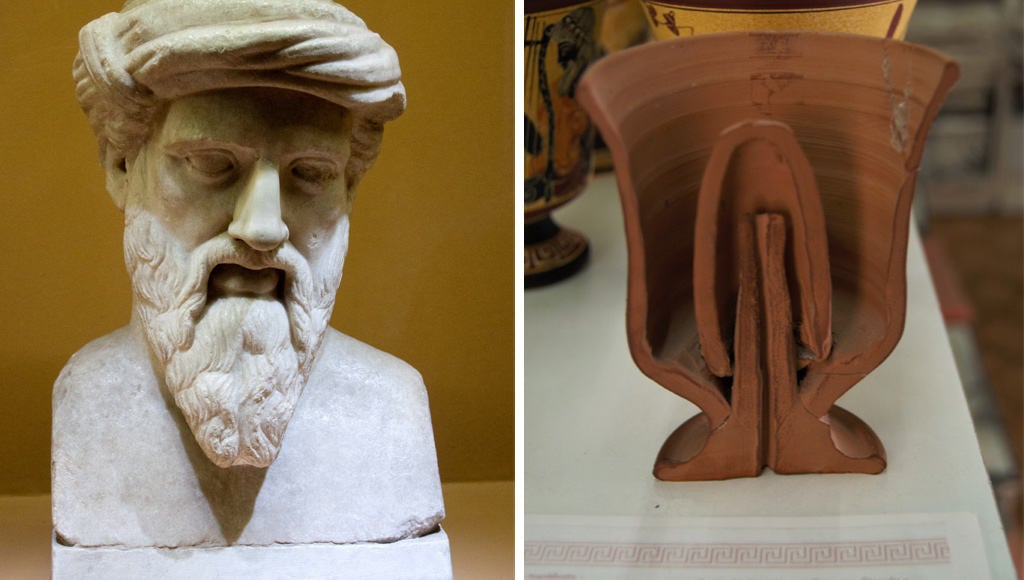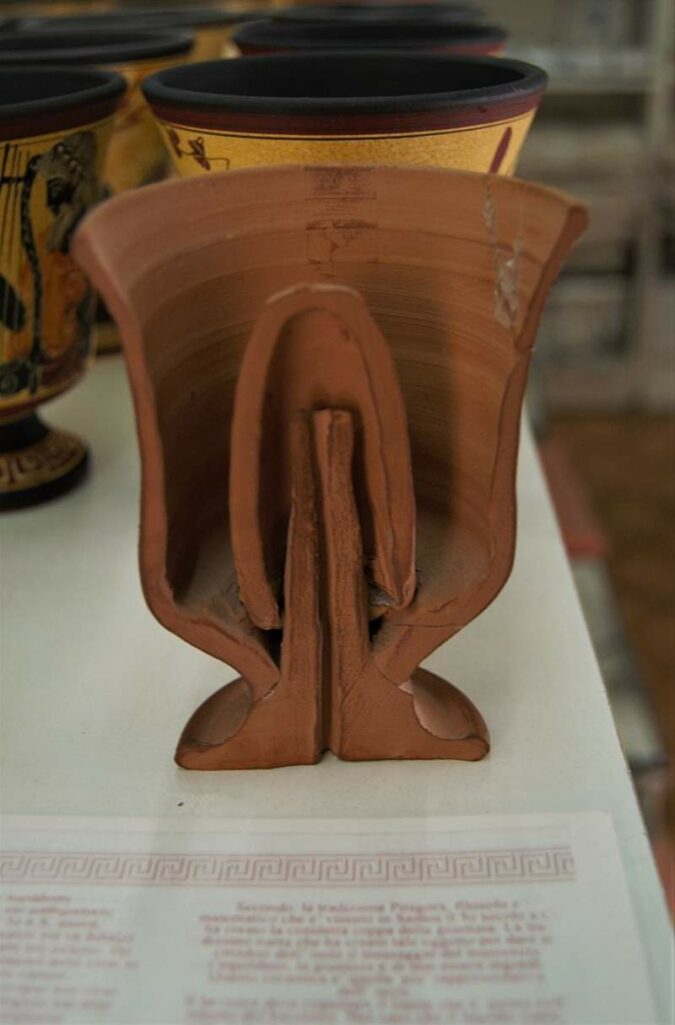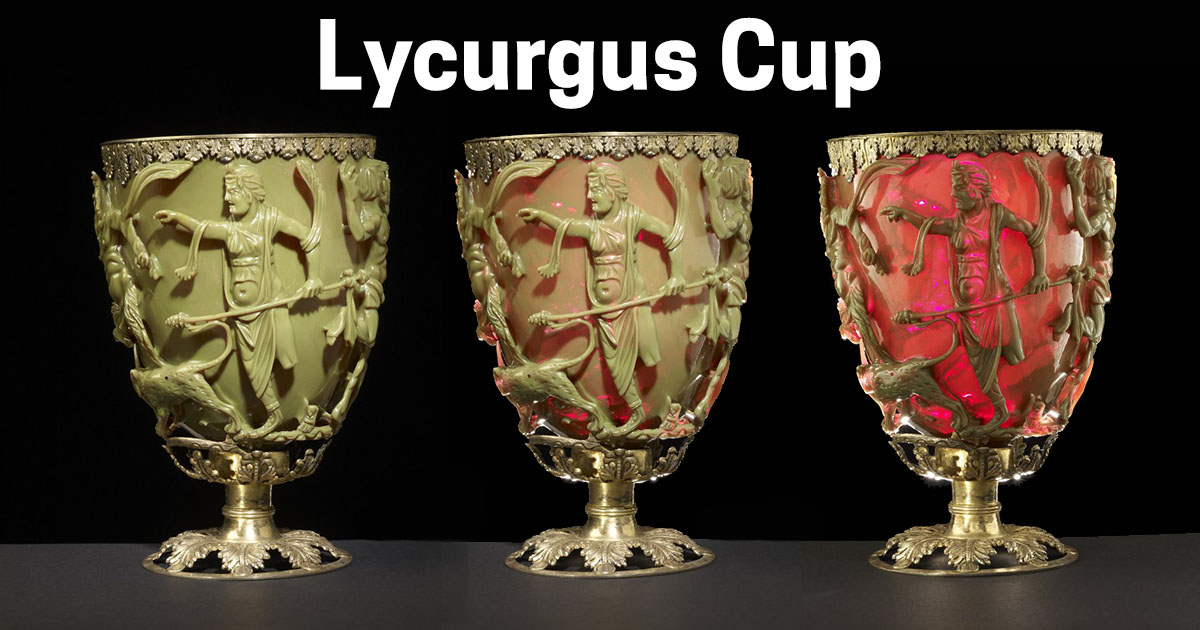
Playing tricks on people is nothing new. Throughout history, people have set each other up for funny pranks. One of those things that never goes out of style is the Pythagorean Cup.
Pythagoras, the ancient Greek philosopher and mathematician, is responsible for one of history’s most memorable practical jokes. Pythagoras, the Greek mathematician, best known for his eponymous theorem, is also known for creating the Pythagorean Cup, a clever prank that has been fooling people for centuries. Who said mathematicians couldn’t have a sense of humor?
Even now, many are fooled by the clever shape of the cup. Let’s take a look at one of the world’s greatest pranks’ fascinating history and engineering.
Discovering the Cup Design

The Pythagorean Cup is an easy puzzle to solve. The Pythagorean Cup differs from other cups in that it has a tiny column in the center instead of a single empty cup. The column is linked to the cup’s stem. The hollow stem of the cup leads to a little hole at the bottom of the cup.
There is an open chamber within the column. A tiny hole in the column allows liquid to flow from the cup to the central column. Drinking from a cup isn’t problematic if you fill it to a level just below the tip of the column. However, if you overfill the cup, you’ll encounter difficulties.

Using Pascal’s theory of communicating vessels, this prank is possible. Small holes in the cup’s base and the column’s stem allow liquid to enter the cup when it’s full, and it exits via the bottom and the stem. This enables the entire cup to be drained by creating a siphon. Consequently, attempting to overfill a glass will result in the loss of all of the liquid that you’ve just poured.
This video shows how this cup works:
The Pythagorean Cup’s Origins: A History of the Prank

According to popular belief, Pythagoras of Samos is to blame for the creation of the cup.
During Pythagoras’ lifetime, between 570 and 495 BCE, the cup is considered to have been first used in the mid-6th century BCE. According to one story, Pythagoras made the cup as a way to punish his friends for being greedy and filling their wine glasses to the maximum. Thus, it is sometimes referred to as the “Greedy Cup” in reference to this story.

It is also possible that the cup was designed by Pythagoras as a reminder for people to drink responsibly. You can normally drink from the cup if the liquid level is below a specific point. However, if you pour above that level, all the liquid will drain away. There is no doubt that it had an impact, whether it was meant as a kind of punishment or a lesson to drink responsibly. People all across the world have been inspired by the Pythagorean Cup’s basic design, and it is still a popular practical joke.
Make Your Own Pythagorean Cup to Prank Your Friend!
The old ritual of having your buddies spill their drinks all over themselves is waiting for you if you want to participate. Pythagorean Cups can be created in a variety of ways at home. Even though it’s possible to get one from an internet store, why bother? Make your own Pythagorean Cup and see how it turns out!
When it comes to designing your own cup, you have a few choices. 3D printing the cup might be an option if you want to take the prank to the next level. An instructional video from 3D Printing Nerd tells you just how it’s done. If you have access to 3D printing technology, this design is worth a try.
If you want to get back to your roots, you may make your cup out of clay, exactly like the ancient Greeks.
Beginner sculptors may learn how to make a Pythagorean Cup from scratch using one of the many online video instructions available. You’ll be able to show off your artistic abilities and play pranks on your buddies at the same time. That’s a win-win situation for everyone!
Are there any other pranks you can think of that uses science and engineering in creative ways?




